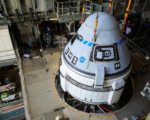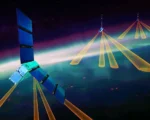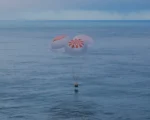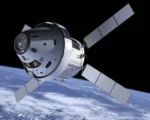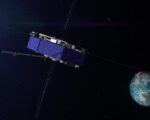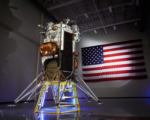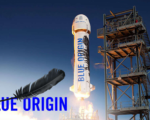Mars Reconnaissance Orbiter Captures Retired InSight Lander Beneath Dust Layers
NASA’s retired InSight Mars lander has recently been photographed by the Mars Reconnaissance Orbiter (MRO) in an image taken on October 23, 2024, using its High-Resolution Imaging Science Experiment (HiRISE) camera. The image reveals the lander nearly camouflaged beneath layers of dust that have accumulated on its solar panels, which now match the reddish-brown hue of the Martian surface. This observation continues to provide valuable insights into Mars’ dynamic dust and wind patterns, helping scientists better understand the planet’s environmental processes.
InSight’s Historic Mission and Its Retirement
The InSight lander, which landed on Mars in November 2018, was instrumental in detecting Marsquakes and studying the planet’s crust, mantle, and core. Its primary mission was to monitor seismic activity and gain deeper insights into Mars’ internal structure. However, in December 2022, NASA officially declared the mission over after the lander stopped communicating due to severe dust accumulation on its solar panels. Engineers from NASA’s Jet Propulsion Laboratory (JPL) in California continued to monitor the lander, hoping that Martian winds would clear the dust and restore power. Despite their efforts, no signals were received, and the lander’s listening operations are set to conclude by the end of this year.
Tracking Dust and Wind Dynamics on Mars
The new HiRISE images were captured as part of an ongoing effort to monitor the effects of dust and wind on Mars’ surface. By tracking how dust accumulates and shifts over time, scientists are gaining a better understanding of the planet’s dust cycle and wind dynamics. Ingrid Daubar, a member of the science team at Brown University, emphasized the significance of these observations, stating that they provide crucial data for future missions to Mars. Understanding how dust interacts with the Martian environment is key for planning future landings, as dust accumulation remains a major challenge for solar-powered missions.
Impact on Future Mars Missions
The information gathered from the HiRISE images of InSight’s location will continue to shape how future missions approach the Martian surface. Dust remains one of the most significant obstacles for equipment on Mars, and understanding how it moves and settles will inform strategies to mitigate its effects on upcoming missions. As NASA prepares for future explorations of Mars, including the Artemis missions and potential human landings, the insights gained from monitoring InSight’s dust-covered panels will be critical in developing new technologies to protect spacecraft and rovers.



